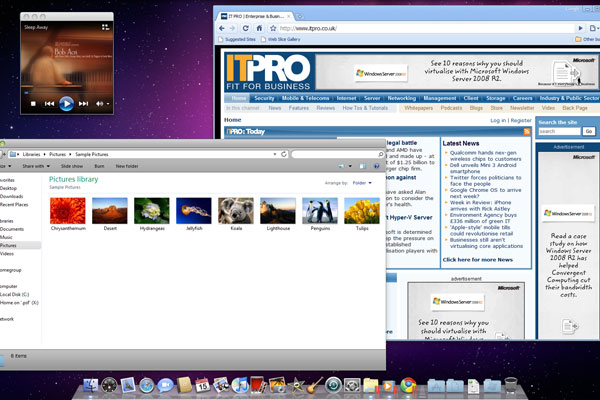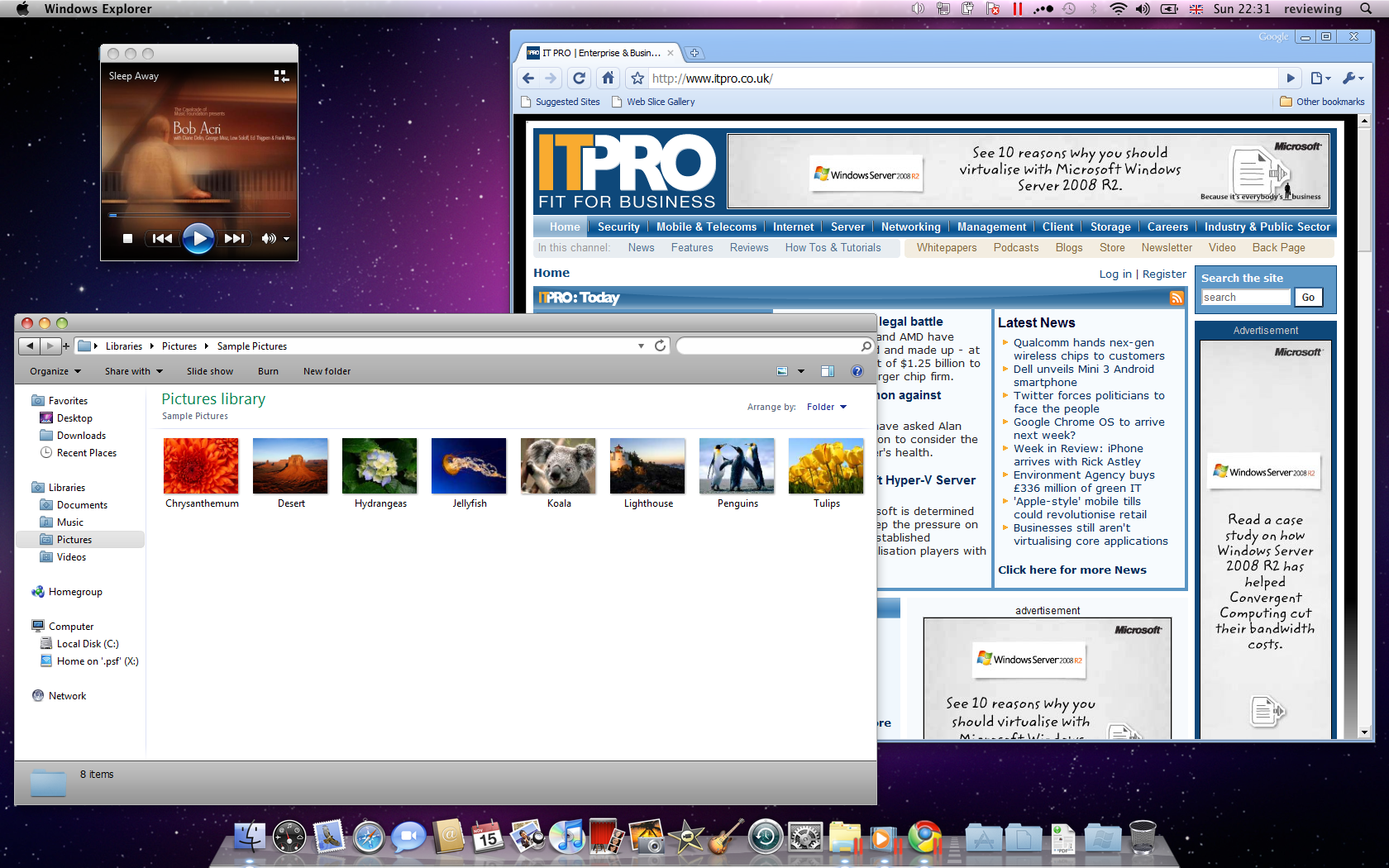Parallels Desktop 5.0 review
Parallels has once again updated its virtualisation software for the Mac. Is it worth upgrading to? We review it to find out.

Parallels users who are owners of the previous version will most likely get by without upgrading, especially as version 4 is compatible with Snow Leopard.Equally, less frequent virtualisation users may also be content with a less sophisticated alternative such as the free and open source VirtualBox. However, if you’re a regular user, then this is definitely a worthwhile purchase.
Parallels Desktop 5 is the latest version of the virtualisation program that enables you to run other operating systems and their applications on a Mac alongside the MacOS. Version 5 includes several refinements that are designed to make it easier to run Windows and Windows applications on your Mac, while providing a more seamless experience.
Version 4 included only rudimentary support for Windows 7, but this has been greatly improved upon in version 5. Simple tasks that worked only with older versions of Windows, or only worked intermittently in version 4, such as adding a printer, now work flawlessly.
It's also now possible to use Parallels' unattended install utility to install Windows 7, which wasn't possible in version 4. This feature isn't as beneficial as it was with Windows XP and Vista, since 7's installer requires significantly less user interaction and time. Sadly though, certain tasks, such as setting up a VPN, are still as tricky to perform as before.

Copying and pasting between Windows and MacOS was previously limited to unformatted text, but both styled text and images can now be copied and pasted. Also, there's finally proper support for multiple monitors, so Windows programs can be used on a secondary monitor previous versions limited Windows applications to your primary monitor.
MacBook users will appreciate the ability to use multi-touch touchpad gestures, such as scrolling, in Windows applications, although others, such as swiping to go back and forth between web pages, only work in certain programs such as Internet Explorer. It's also possible to use the Apple remote to control programs such as Windows Media Player and Media Center. Unfortunately, Parallels can't block Mac applications, such as iTunes and Front Row, from recognising the remote at the same time as Windows applications limiting the usefulness of this feature.
Get the ITPro daily newsletter
Sign up today and you will receive a free copy of our Future Focus 2025 report - the leading guidance on AI, cybersecurity and other IT challenges as per 700+ senior executives
-
 Cleo attack victim list grows as Hertz confirms customer data stolen – and security experts say it won't be the last
Cleo attack victim list grows as Hertz confirms customer data stolen – and security experts say it won't be the lastNews Hertz has confirmed it suffered a data breach as a result of the Cleo zero-day vulnerability in late 2024, with the car rental giant warning that customer data was stolen.
By Ross Kelly Published
-
 Women show more team spirit when it comes to cybersecurity, yet they're still missing out on opportunities
Women show more team spirit when it comes to cybersecurity, yet they're still missing out on opportunitiesNews While they're more likely to believe that responsibility should be shared, women are less likely to get the necessary training
By Emma Woollacott Published
-
 OpenAI wants developers using its new GPT-4.1 models – but how do they compare to Claude and Gemini on coding tasks?
OpenAI wants developers using its new GPT-4.1 models – but how do they compare to Claude and Gemini on coding tasks?News OpenAI says its GPT-4.1 model family offers sizable improvements for coding, but tests show competitors still outperform it in key areas.
By Ross Kelly Published